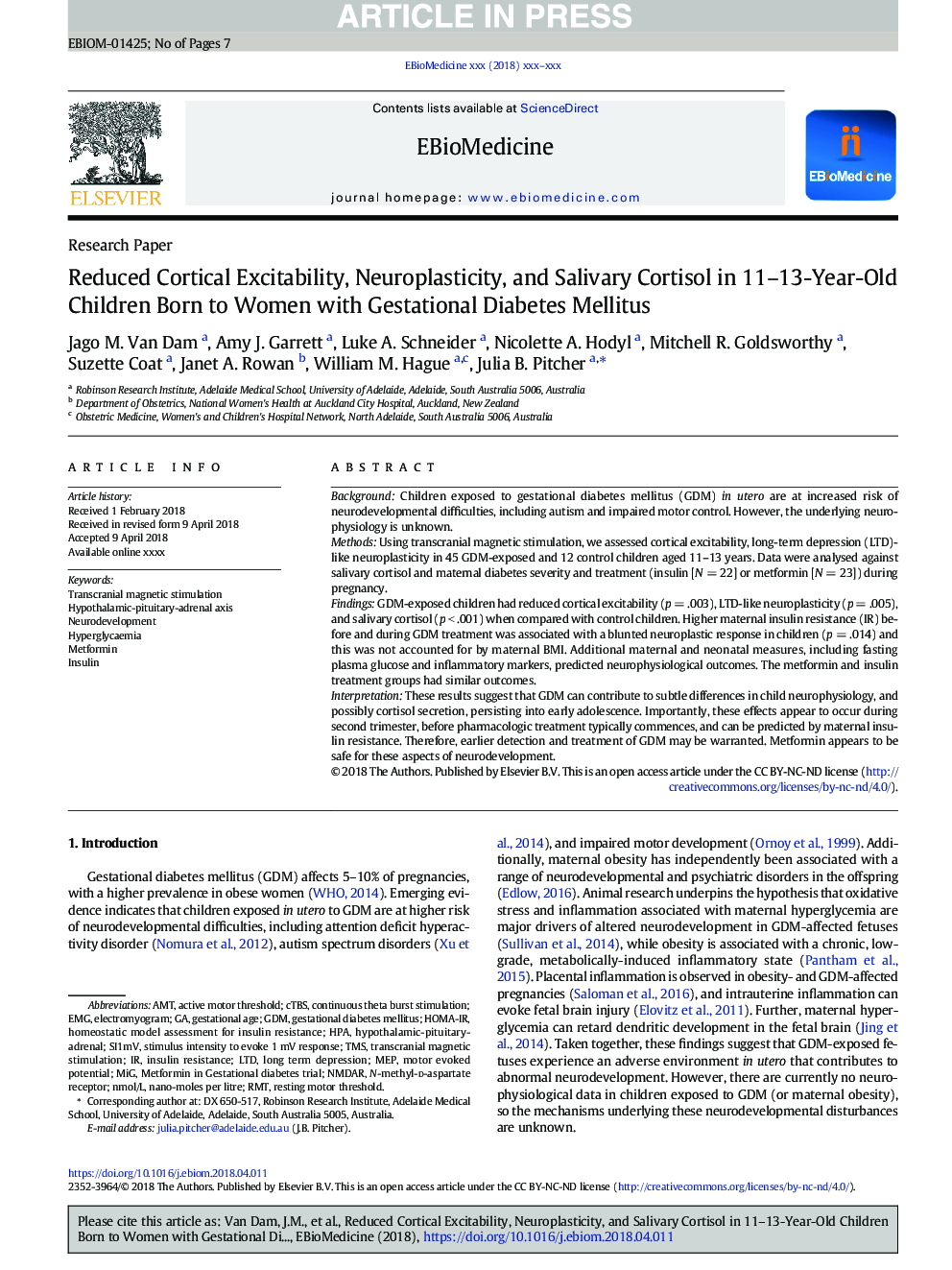| Article ID | Journal | Published Year | Pages | File Type |
|---|---|---|---|---|
| 8437271 | EBioMedicine | 2018 | 7 Pages |
Abstract
These results suggest that GDM can contribute to subtle differences in child neurophysiology, and possibly cortisol secretion, persisting into early adolescence. Importantly, these effects appear to occur during second trimester, before pharmacologic treatment typically commences, and can be predicted by maternal insulin resistance. Therefore, earlier detection and treatment of GDM may be warranted. Metformin appears to be safe for these aspects of neurodevelopment.
Keywords
AMTRMTMEPNMDARHOMA-IRcTBSTMSGDMMIGactive motor thresholdHomeostatic model assessment for insulin resistanceresting motor thresholdlong term depressionEMGelectromyograminsulinTranscranial magnetic stimulationContinuous theta burst stimulationneurodevelopmentGestational diabetes mellitusgestational ageMetforminLTDHypothalamic-pituitary-adrenal axisInsulin resistanceMotor evoked potentialHPAHyperglycaemiahypothalamic-pituitary-adrenalN-methyl-d-aspartate receptor
Related Topics
Life Sciences
Biochemistry, Genetics and Molecular Biology
Cancer Research
Authors
Jago M. Van Dam, Amy J. Garrett, Luke A. Schneider, Nicolette A. Hodyl, Mitchell R. Goldsworthy, Suzette Coat, Janet A. Rowan, William M. Hague, Julia B. Pitcher,
